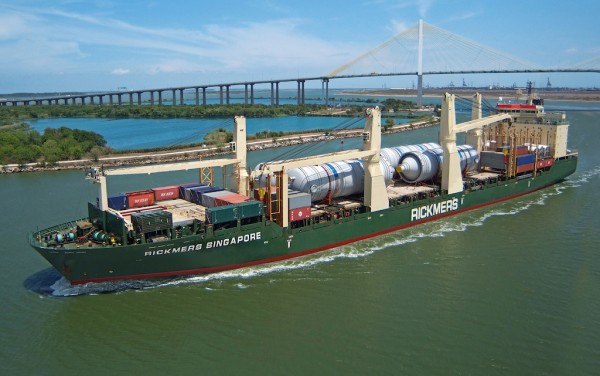The Trump administration’s assault on global trade is rattling everyone up and down the supply chain. Shipping lines can easily get caught in the middle. They are scrambling to figure out how to respond long-term to an unsettled environment that can change in an instant with a tweet or a press conference.
In an email exchange, Benjamin Joithe, director, global sales and marketing, for Rickmers-Line GmbH & Co., addressed this uncertainty. “The biggest issue for a carrier such as Rickmers-Line is the unpredictability of the current administration,” he wrote. “Policy changes are often erratic and makes it very cumbersome to plan tonnage allocation for the years ahead.”

When asked, Joithe said that Rickmers-Line has no plans to alter its biweekly service from Asia to the US, a route that has been operating for more than 15 years. While it moves steel across the Pacific, Rickmers-Line isn’t dependent on that cargo to keep its 30,000 dwt ships steaming. “Steel is unlikely to completely disappear for that trade route and if volumes drop, you can complement this with other high density/heavy cargos.”
Chinese steel producers are scouting for new markets as well and shipping lines are monitoring progress. One closely watched effort is China’s hugely ambitious initiative, One Belt One Road, which is pouring billions of dollars into infrastructure projects in developing countries across the globe. “There are indeed new opportunities for our mother company Zeaborn and Rickmers-Line, for example, to Pakistan,” Joithe said.
What about project cargo? “So far we have seen small instances where some commodities are affected,” Joithe said, citing “HVAC technologies where US buyers have opted out from Chinese suppliers and now source from Europe.”
However, Joithe stressed that switching suppliers for major projects is no easy task. “If a refinery project in Lake Charles is now hit with 25% additional costs of key components from China that cannot be switched due to the plant design, the higher costs will ultimately hit the final consumer,” he said.
Then, there’s the flipside to the cascading trade wars, China’s threatened imposition of stiff tariffs on American soybeans. What does this mean for global shipping? Rickmers-Line, itself, rarely moves soybeans, and Joithe said, “it’s very hard to anticipate the cascading effect of diminished soybean exports from the USA to China on the Supermax segment.” If, for example, China begins to ramp up imports from Brazil, the world’s second biggest soybean producer after the US, “Brazil owners would simply reposition their bulkers to deal with the trade shift,” Joithe believes.
China produces about 500 million pigs, which rely on soybeans as their main feedstock. China, itself, doesn’t produce nearly enough soybean crops on its own and accounts for 60% of the world’s soybean importation. “The soybeans will have to come from somewhere,” Joithe said.




